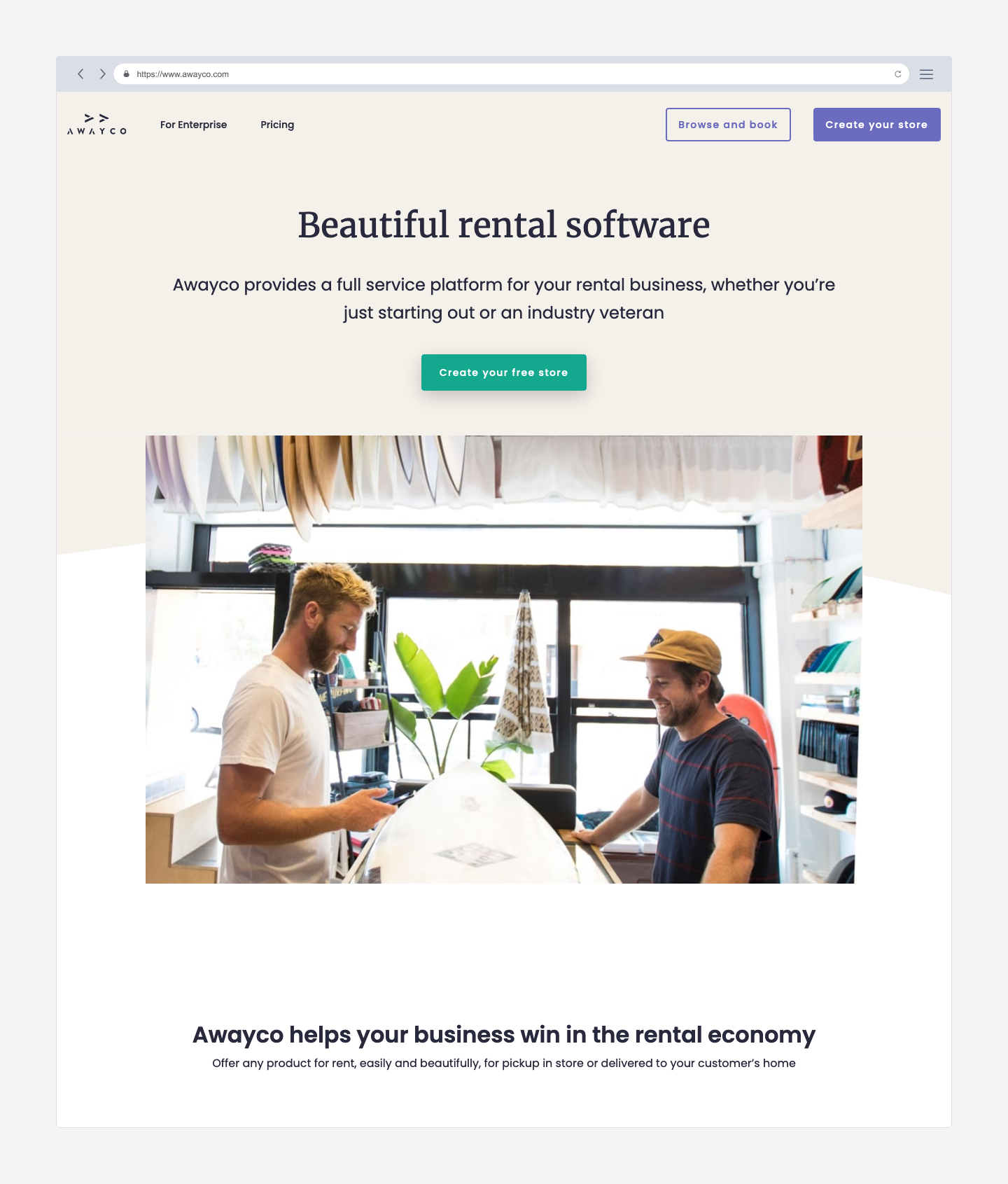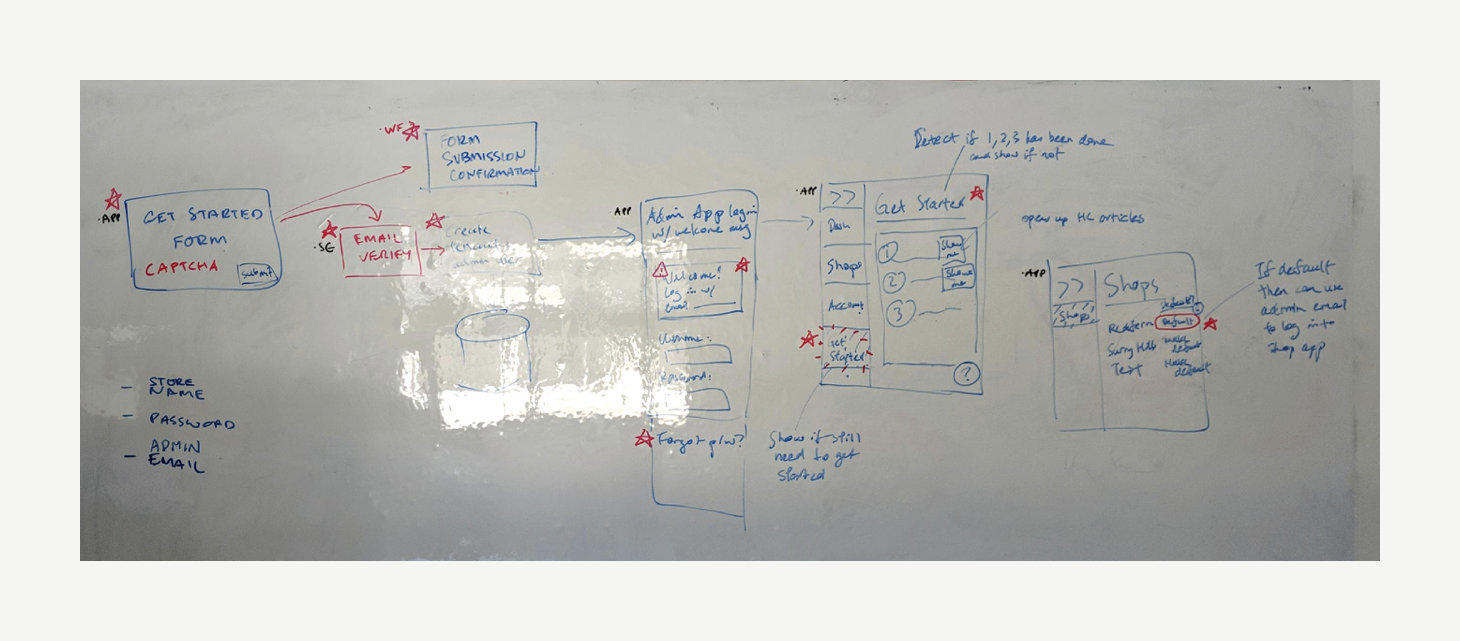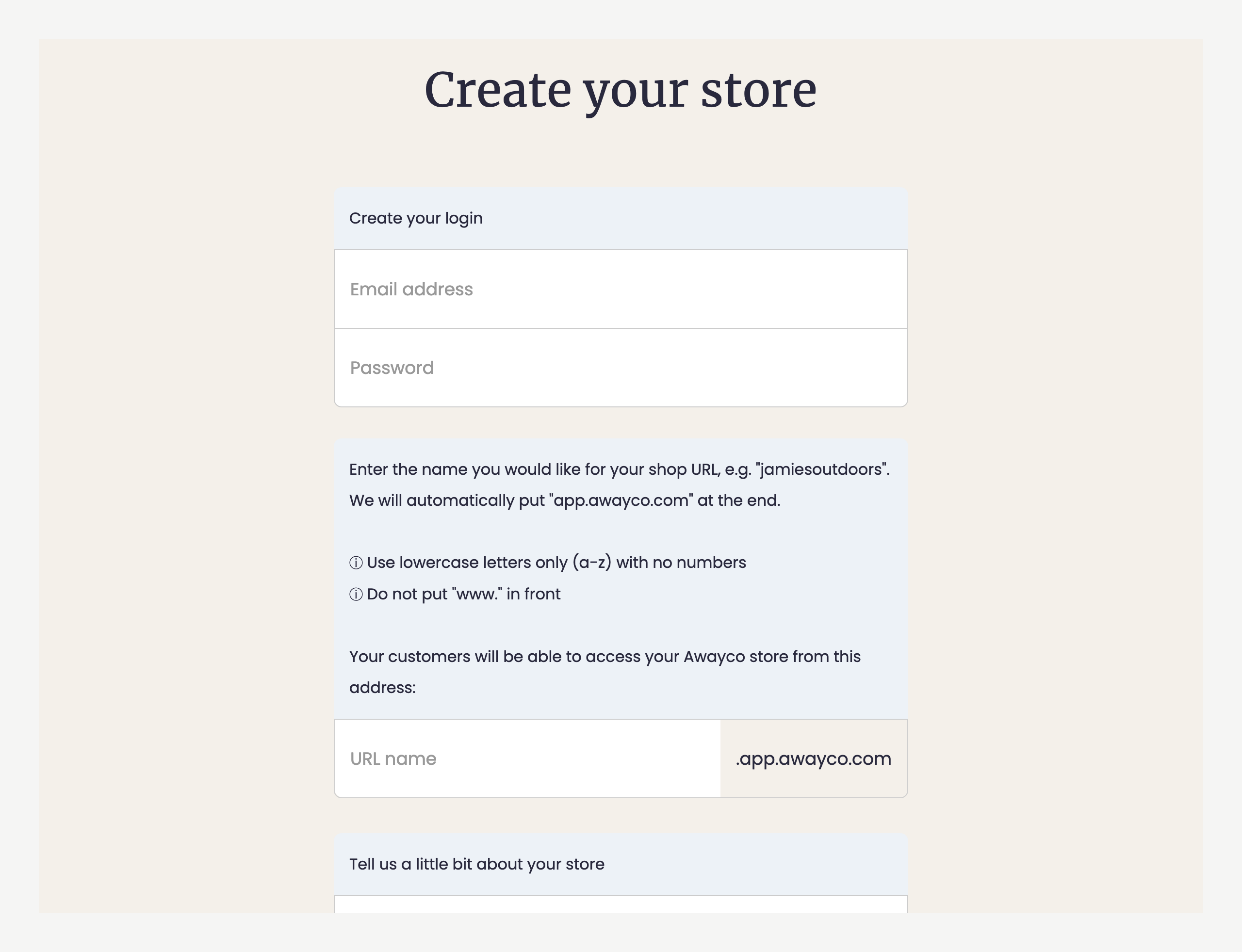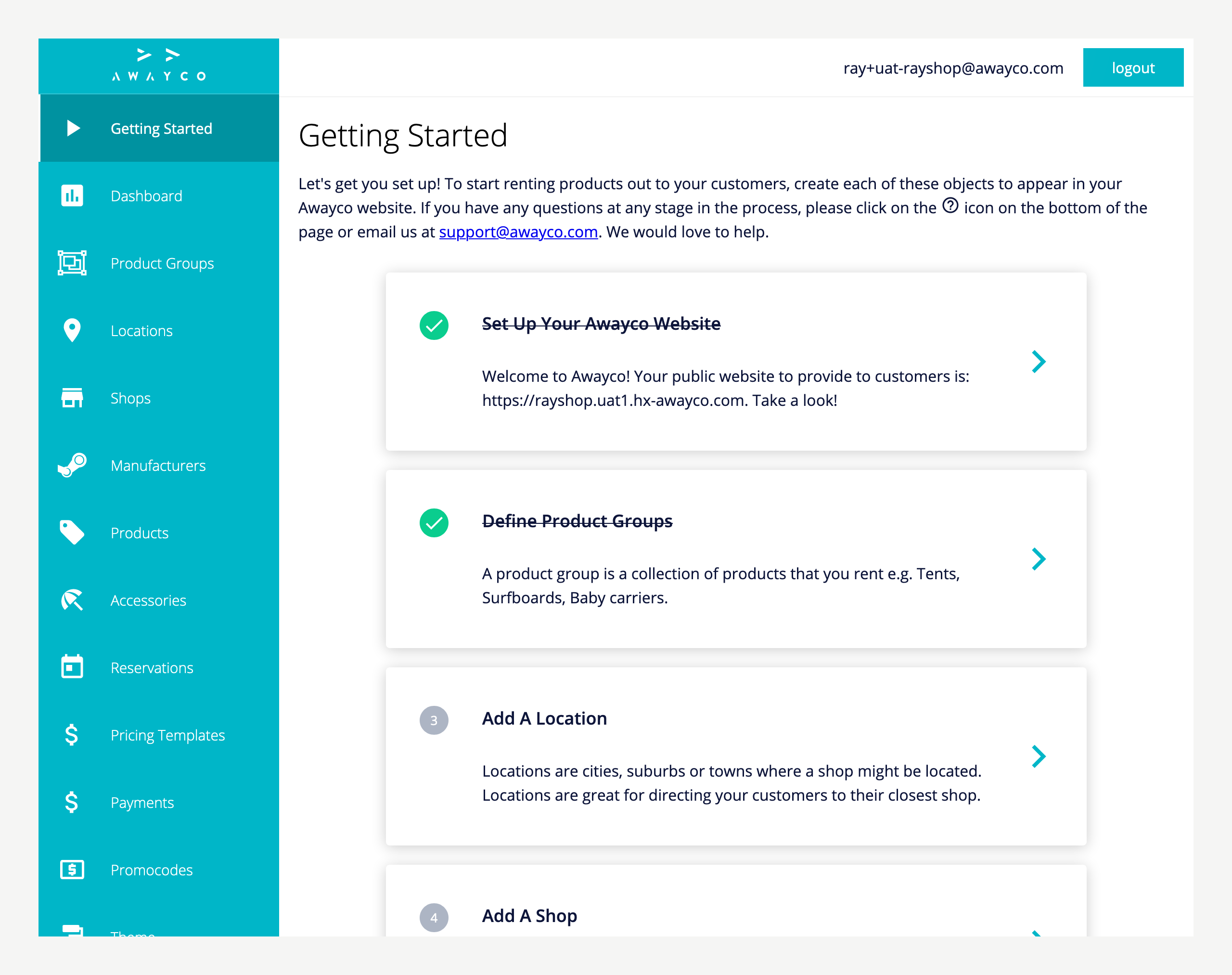Signup and Onboarding Process

The Challenge
Awayco is a full-service rental SaaS platform that allows anyone to create an online store to rent out their products or services. The business strategy is based upon scaling up the number of active stores on the platform. To achieve this, we needed to smooth out the signup process and provide a self-service experience for store owners to manage their rental offerings to their customers.
The original signup process was a manual-based one. The store would submit a signup request via a web form to the operations team, who in turn contacted the user to find out sufficient information to set up their store. The team would then coach the user on how to use the software and set up inventory for them. This process was slow, expensive, prone to human error, and would not have been scalable as the business grew.

Mapping the User Flow
I was responsible for designing a new signup and onboarding process that was simple and easy to use, which allows the user to be able to run through the entire process by themselves. To achieve this, I first mapped out the end-to-end user flow — from arrival on Awayco's website, to store setup, and to receiving their first bookings on the platform.
Next, I interviewed members of our internal operations team and received feedback from customers who recently joined onto the platform. This revealed key pain points in the process: 1) Lack of instant feedback from the signup form, 2) Missing clarity on the steps to place products online, and 3) Too much back and forth communication with slow response times.

Instant Signup Form
The solution addresses each of these issues. Firstly, we hooked the signup form up to a backend API endpoint which creates the account instantly. To prevent fraudulent requests, the form includes a CAPTCHA component and email verification step. The operations team receives a notification only once the user's email is verified. With this information, the team is still able to follow up with customer signups but only needs to be concerned with genuine requests.

Getting the Customer Started
Secondly, I designed and built an onboarding page in the administration console. It presents the step-by-step process for the user to follow to get their store online. At each stage, the console shows a help article side by side in the UI, which allows the user to follow along or reach out for help.
The UI prominently distinguishes between complete and incomplete steps and presents each task as a call to action. I included an already "completed" step (rental website creation) as it increases the likelihood for the user to complete the remaining steps and provides a visual cue for what to do next. I tested this process with users and refined it to ensure that it was intuitive and self-driveable.
Outcome
The automation reduced the need for back and forth communications and freed up internal resources from executing a repetitive and error-prone process. Instead, they have been able to focus on catering towards each store's unique needs and helping them on an exception basis to get them online faster.